Stretchable chiral pockets for palladium-catalyzed highly chemo- and enantioselective allenylation
- PMID: 33893276
- PMCID: PMC8065118
- DOI: 10.1038/s41467-021-22498-1
Stretchable chiral pockets for palladium-catalyzed highly chemo- and enantioselective allenylation
Abstract
Pyrazolones are a vital class of heterocycles possessing various biological properties and much attention is paid to the diversified synthesis of enantiopure pyrazolone derivatives. We describe here the development of diphenylphosphinoalkanoic acid based chiral bisphosphine ligands, which are successfully applied to the palladium-catalyzed asymmetric allenylation of racemic pyrazol-5-ones. The reaction affords C-allenylation products, optically active pyrazol-5-ones bearing an allene unit, in high chemo- and enantioselectivity, with DACH-ZYC-Phos-C1 as the best ligand. The synthetic potential of the C-allenylation products is demonstrated. Furthermore, the enantioselectivity observed with DACH-ZYC-Phos-C1 is rationalized by density functional theory studies.
Conflict of interest statement
The authors declare no competing interests.
Figures

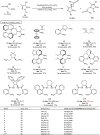
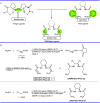
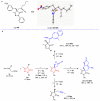
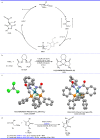
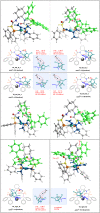
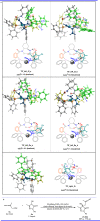
Similar articles
-
DACH-ZYC-Phos/Pd-Catalyzed Enantioselective Allenylation of Secondary Phosphine Oxides via Ligand Relay.J Am Chem Soc. 2025 Jul 16;147(28):24958-24968. doi: 10.1021/jacs.5c07465. Epub 2025 Jul 7. J Am Chem Soc. 2025. PMID: 40623700
-
Palladium-catalyzed asymmetric arylation, vinylation, and allenylation of tert-cyclobutanols via enantioselective C-C bond cleavage.J Am Chem Soc. 2003 Jul 23;125(29):8862-9. doi: 10.1021/ja035293l. J Am Chem Soc. 2003. PMID: 12862483
-
From Palladium to Brønsted Acid Catalysis: Highly Enantioselective Regiodivergent Addition of Alkoxyallenes to Pyrazolones.Angew Chem Int Ed Engl. 2017 Jan 19;56(4):1077-1081. doi: 10.1002/anie.201610473. Epub 2016 Dec 30. Angew Chem Int Ed Engl. 2017. PMID: 28035786
-
[Synthesis and properties of optically active organoantimony compounds].Yakugaku Zasshi. 2003 Jul;123(7):577-85. doi: 10.1248/yakushi.123.577. Yakugaku Zasshi. 2003. PMID: 12875240 Review. Japanese.
-
Copper(I)-Catalyzed Enantioconvergent Borylation of Racemic Benzyl Chlorides Enabled by Quadrant-by-Quadrant Structure Modification of Chiral Bisphosphine Ligands.Angew Chem Int Ed Engl. 2019 Aug 5;58(32):11112-11117. doi: 10.1002/anie.201906011. Epub 2019 Jul 3. Angew Chem Int Ed Engl. 2019. PMID: 31168946 Review.
Cited by
-
Palladium-Catalyzed Stereoselective Construction of 1,3-Stereocenters Displaying Axial and Central Chirality via Asymmetric Alkylations.Molecules. 2023 Mar 24;28(7):2927. doi: 10.3390/molecules28072927. Molecules. 2023. PMID: 37049689 Free PMC article.
References
-
- Varvounis, G. Advances in Heterocyclic Chemistry (ed. Katritzky, A. R.) Ch. 2 (Elsevier Inc., 2009).
-
- Chumakova, L. et al. Compounds Useful as Modulators of TRPM8. US0376136 (2015).
-
- Zhang, Y. et al. Divergent cascade construction of skeletally diverse “Privileged” pyrazole-derived molecular architectures. Eur. J. Org. Chem. 2030–2037 (2015).
Publication types
LinkOut - more resources
Full Text Sources

